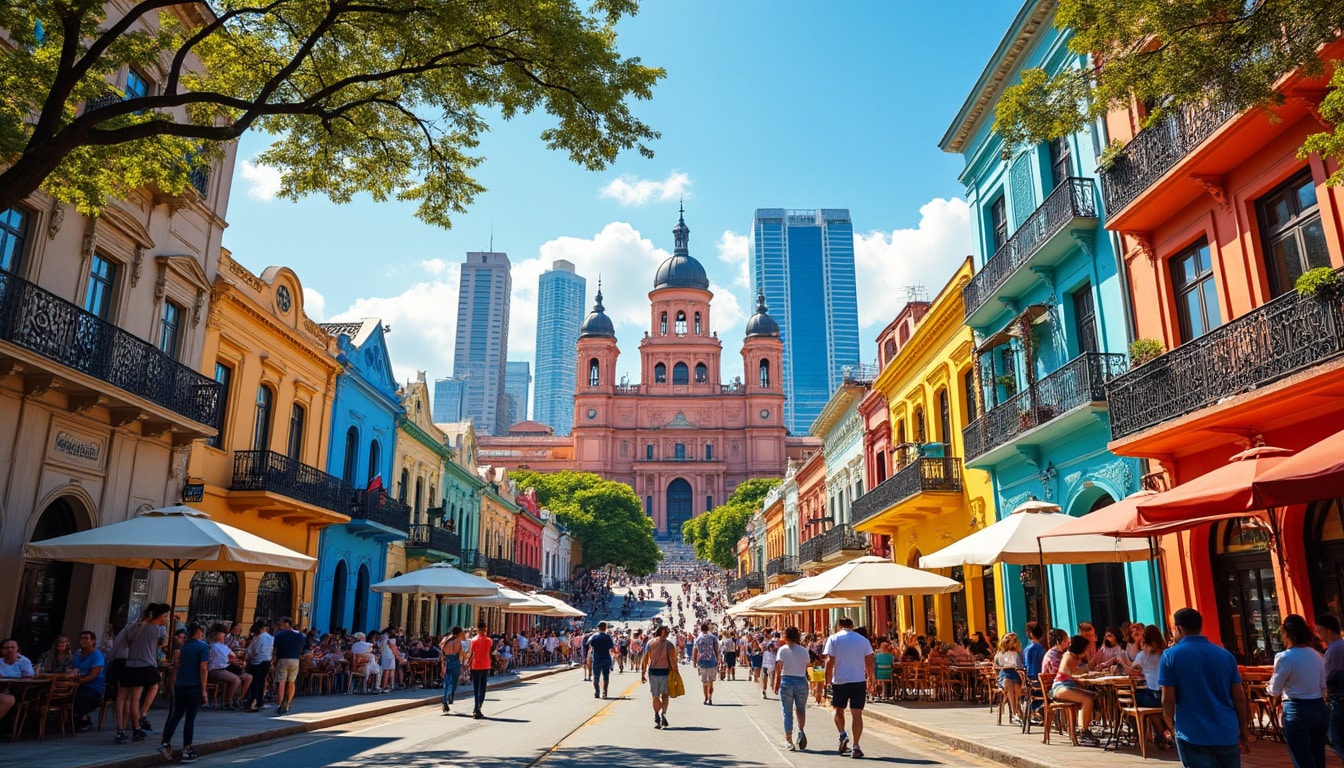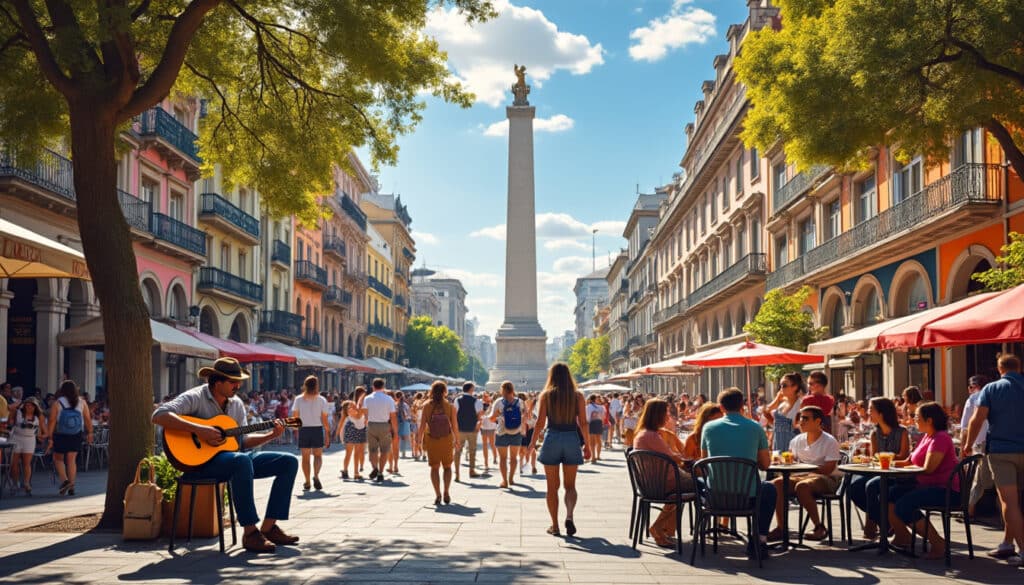Buenos Aires is renowned for its captivating architectural diversity, a melting pot of styles that reflect its rich cultural heritage. Known as both “The queen of the Río de la Plata” and “Latin America’s Paris,” the city’s landscape is a vibrant testament to its historical evolution and cosmopolitan aspirations. From colonial vestiges scattered around Plaza de Mayo to the modernistic Torre Agbar-like skyscrapers lighting up its skyline, Buenos Aires’ urban scenery is as dynamic as its cultural life, driven by a mix of European elegance and Latin American vibrancy.
The Historic Core: Colonial and Neo-colonial Influences
The historic core of Buenos Aires, prominently nestled around Plaza de Mayo, offers a scintillating glimpse into the city’s colonial past, albeit through carefully reconstructed neo-colonial facades. This area is somewhat akin to a picturesque history book, adorned with colorful walls and ornate details reminiscent of its beginnings. While much of the city has evolved into a modern metropolis, a stroll around this central plaza still whispers tales of the early Spanish colonial days.
One of the most iconic structures here is the Casa Rosada, where the pink hue and stately architecture capture both the eye and the imagination. This presidential palace stands as a symbol of political history and architectural finesse, combining elements of Italian and French design, showcasing an eclectic amalgamation of styles that Buenos Aires is famed for.
Beside the Casa Rosada, the Metropolitan Cathedral offers another architectural marvel. It is an exquisite blend of Baroque and Neoclassical designs, with impressive sculptures and art pieces depicting various religious scenes. It’s here that the cultural intersection of Spanish colonial and European Neoclassical styles is vividly evident.
The following table showcases key architectural influences in the historic core:
| Structure | Architectural Style | Key Features | Influence |
|---|---|---|---|
| Casa Rosada | Neoclassical | Pink facade, arcades | Italian, French |
| Metropolitan Cathedral | Baroque, Neoclassical | Imposing facade, sculptures | Spanish, Italian |
| Cabildo | Colonial | Arched galleries | Spanish |
In terms of ambience, the historic core of Buenos Aires resonates with an air that’s both historical and vibrant. Each building and street corner tells a story, much like the living history of the city itself. The urban growth around the 19th century marked a significant transformation as Buenos Aires transitioned from a colonial village into a burgeoning metropolis. This transition laid the groundwork for the eclectic mix of European and local styles that followed and shaped the cityscape.
The Urban Growth of Buenos Aires: From Villages to a Metropolis
The transformation of Buenos Aires into a metropolitan powerhouse was largely driven by its expansive urban growth, particularly during the late 19th and early 20th centuries. During this period, the city underwent significant changes that reflected broader global architectural trends while making room for unique local interpretations.
The arrival of immigrants played a pivotal role in this architectural transformation, bringing with them new styles, traditions, and customs. This infusion of cultures can be observed in neighborhoods like La Boca and Recoleta. La Boca, known for its colorful houses and strong Italian influence, encapsulates the essence of the immigrant contribution to Buenos Aires’ urban identity.
Meanwhile, areas like Palermo Chico and Recoleta are often compared to Paris due to their elegant architectural styles and opulent European-inspired buildings. This is where the grandeur of French Art Nouveau mixes with the modernist outlook, giving the neighborhood a timeless sophistication. Additionally, landmarks such as the Teatro Colón further enhance the cultural narrative, merging world-class acoustics with breathtaking design.
Another noteworthy area is the Avenida de Mayo, reminiscent of Madrid’s Gran Vía. The avenue is adorned with exquisite examples of Art Nouveau architecture, highlighted by structures like the Palacio Barolo. This building acts as a cultural bridge, linking the worlds of Italian Dante Alighieri’s Divine Comedy to the architectural dreams realized in concrete and glass.

How Buenos Aires grew can be discerned through these distinctive urban features:
- 🌆 The blend of European and immigrant influences in areas like La Boca and San Telmo.
- 🏛️ Major boulevards like Avenida de Mayo adding to the city’s sophistication.
- 🎭 Architectural landmarks such as Teatro Colón and Palacio Barolo enhancing cultural heritage.
The transformation of Buenos Aires from a village to a sophisticated, multicultural metropolitan city is not just a story of architectural evolution, but a testament to the city’s ability to integrate diverse cultural influences, shaping its unique identity over the decades.
Art Deco and Art Nouveau: A Walk Through the Avenues
The architectural avenues of Buenos Aires are a celebration of elegance and creativity, significantly marked by the ever-present Art Deco and Art Nouveau styles. These distinctive architectural movements have left an indelible mark on the city, coloring its skyline with intricate designs and innovative structures.
Particularly prominent is the Edificio Kavanagh, a masterpiece of Art Deco architecture and once the tallest skyscraper in Latin America. This striking building symbolizes both a bygone era and timeless beauty, with its symmetry, geometric forms, and streamlined exterior, capturing the spirit of optimism and modernity of its time.
In contrast, the graceful flow of Art Nouveau can be seen across the picturesque structures along Avenida de Mayo. Here, architectural designs are infused with organic lines, floral motifs, and ornate facades, resulting in a vivid tableau of artistic expression. Walking along this avenue provides a sensory journey through an era where art and architecture were seamlessly intertwined.
Key examples of Art Deco and Art Nouveau in Buenos Aires:
| Building | Style | Location | Architectural Significance |
|---|---|---|---|
| Edificio Kavanagh | Art Deco | Retiro | Tallest skyscraper in Latin America upon completion, geometric elegance. |
| Palacio Barolo | Art Nouveau | Avenida de Mayo | Symbolic representation of Dante’s Divine Comedy, detailed interiors. |
| Mercado de Abasto | Art Deco | Abasto | Transformative urban space, historical market with innovative design. |
In 2025, Buenos Aires continues to serve as a vibrant gallery of Art Deco and Art Nouveau, drawing both architecture enthusiasts and casual visitors into its ornate embrace. The ongoing preservation and appreciation of these styles ensure that the city retains its ethereal charm and continues to be a beacon of artistic evolution in the region.
Modern Innovation: Skyscrapers and Urban Development
As Buenos Aires grows, its skyline reflects an embrace of modern innovation alongside its historic roots. The city has seen significant urban development, evident in its modern skyscrapers and redesigned public spaces, demonstrating a continuous adaptation to the demands of contemporary life.
Pioneering structures like the Paseo del Bajo and Puente de la Mujer represent the city’s forward-thinking approach. They blend sophisticated design with functionality, enhancing urban infrastructure while maintaining respect for the natural and historical environment. Such projects are indicative of Buenos Aires’ commitment to architectural excellence that leverages advanced technology for sustainable urban solutions.
The innovative journey of Buenos Aires’ urban architecture can be summed up by the following:
- 🚀 Skyscrapers like those inspired by the Torre Agbar redefining the city skyline.
- 🌉 Innovative designs such as the Puente de la Mujer integrating art and utility.
- 🌿 Embracing green spaces exemplified by the Buenos Aires Ecological Reserve.
These developments showcase Buenos Aires’ unyielding enthusiasm for modernization. The balance between historical reverence and futuristic design is nowhere more evident than in the seamless integration of new buildings alongside cherished icons like the Teatro Colón and Palacio Barolo.
Each new addition to the Buenos Aires skyline is carefully curated to ensure harmony within the city’s eclectic architectural narrative, ensuring that it remains vibrant and inviting as it continues to grow and evolve in 2025 and beyond.
Community and Cultural Expressions through Architecture
In Buenos Aires, architecture serves as more than just a structural function; it is a vivid expression of community and cultural identity. The city’s diverse neighborhoods are a testament to the various influences that have shaped its cultural fabric over centuries. This eclectic mix of architectural styles provides a canvas for the vibrant lives and stories of its people.
The San Telmo district is home to cobblestone streets and historic buildings that whisper tales of a bohemian past, deeply ingrained with the city’s tango culture and antique markets. Meanwhile, Caminito in La Boca is a visual marvel with its brightly painted structures serving as an open-air art gallery. This neighborhood was historically a haven for immigrants and artists, and its architecture provides a colorful representation of cultural resilience and creativity.
Let’s dive into how architecture and community intertwine in Buenos Aires:
- 🎨 Cultural influences embodied in Caminito’s artistic expressions.
- 💃 Tango culture reflecting through San Telmo’s vintage charms.
- 🌍 Multicultural ties in neighborhoods, celebrating the city’s cosmopolitan spirit.
The Buenos Aires Ecological Reserve stands as another testament to community integration, where urban planning and environmental consciousness intersect, providing a peaceful green retreat amidst the urban hustle. This unique blend of natural and built environments further contributes to the city’s cultural tapestry, offering spaces where both locals and visitors can relax and reconnect.
Neighborhoods in Buenos Aires are more than just geographic locations; they are living entities, each telling its own story through architecture and community life, adding layers of depth to the city’s captivating narrative. In these spaces, architecture doesn’t merely house the community; it tells its story, influences its culture, and enriches its identity.
FAQ on Architecture and Urban Features of Buenos Aires
Here are some common questions and answers about the unique architectural landscape of Buenos Aires:
Q: What makes Buenos Aires’ architecture unique?
A: The unique blend of European and Latin American architectural styles, historic landmarks, and modern innovations contribute to Buenos Aires’ distinct architectural identity.
Q: Where can I see the best examples of Art Deco architecture in Buenos Aires?
A: The best examples of Art Deco architecture can be observed at the Edificio Kavanagh in Retiro and the Palacio Barolo along Avenida de Mayo.
Q: How does Buenos Aires balance modern architecture with its historical heritage?
A: Buenos Aires achieves this balance through thoughtful urban planning, integrating modern structures like the Torre Agbar-inspired skyscrapers while preserving historical sites such as the Teatro Colón and Metropolitan Cathedral.

Fun Facts & Curiosities About Buenos Aires
Buenos Aires, the heart and soul of Argentina, is not just a city, but an experience. Known for its vibrant culture, architectural marvels, and passionate tango, Buenos Aires offers surprising facts and curiosities that even frequent visitors may find fascinating.…
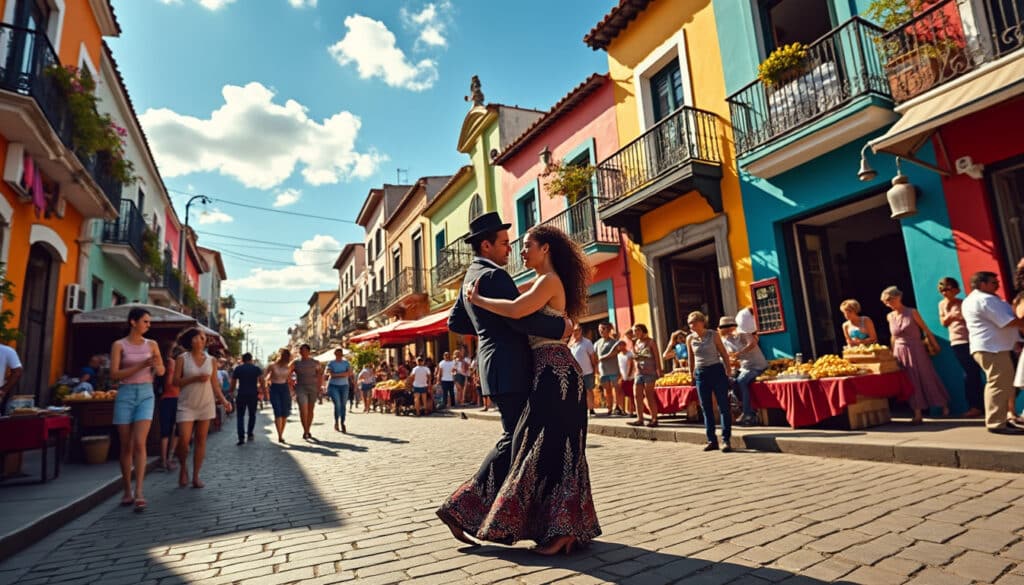
Basic facts about Buenos Aires
Buenos Aires, the vibrant capital of Argentina, is a city of inspiring contrasts and bustling energy. Famous for its rich cultural heritage and dynamic street life, it attracts travelers from all over the world. With its European flair and Latin…
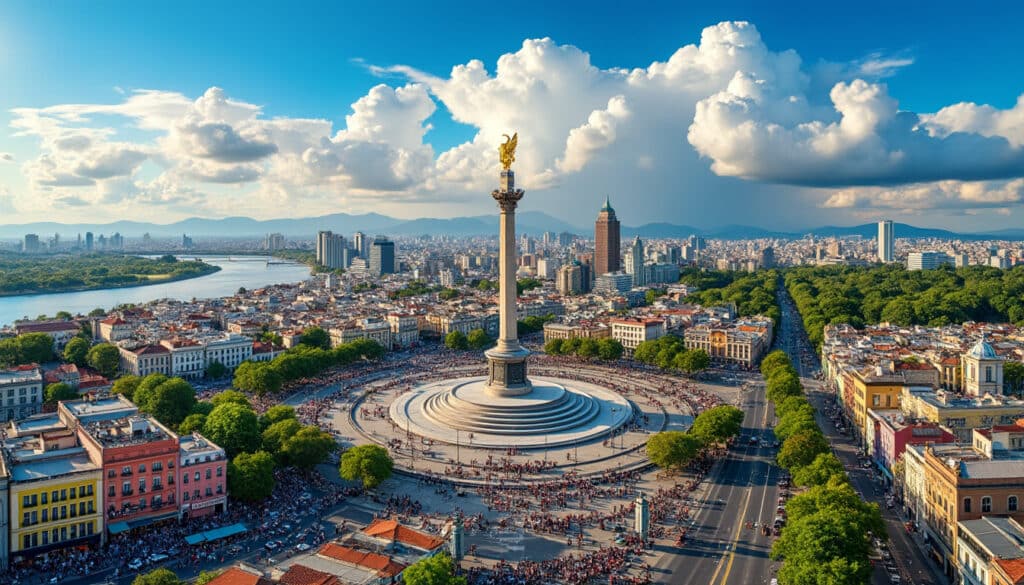
Demographics and geography of Buenos Aires
Buenos Aires, a city pulsating with energy, stands as one of the most influential urban landscapes in Latin America. Known for its captivating blend of European flair and Latin American warmth, Buenos Aires is rich in cultural diversity and historical…
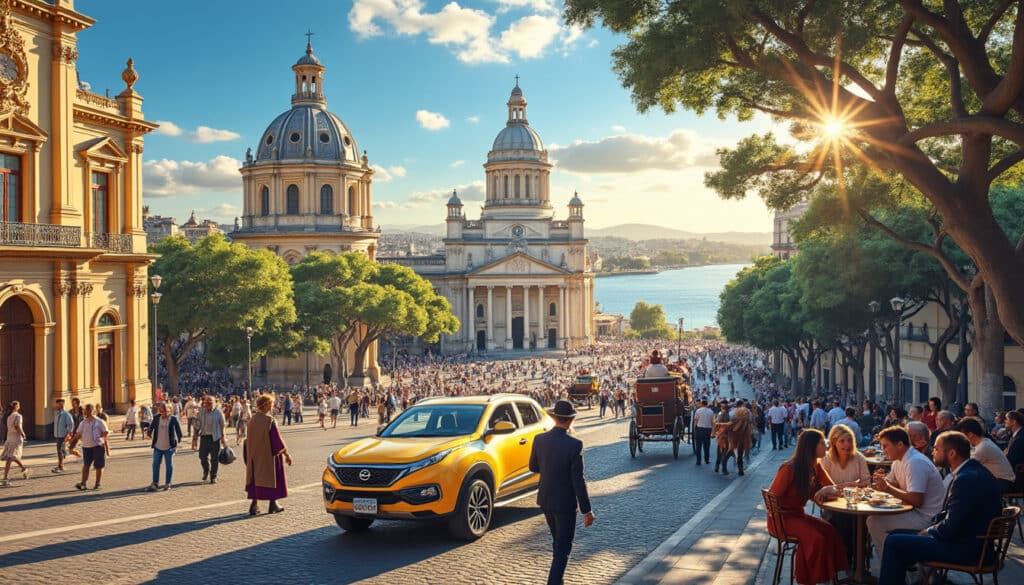
Buenos Aires, often regarded as the “Paris of South America”, carries a rich tapestry of history woven through its vibrant streets and iconic landmarks. From its roots as a colonial outpost to its current status as a bustling metropolis, Buenos…
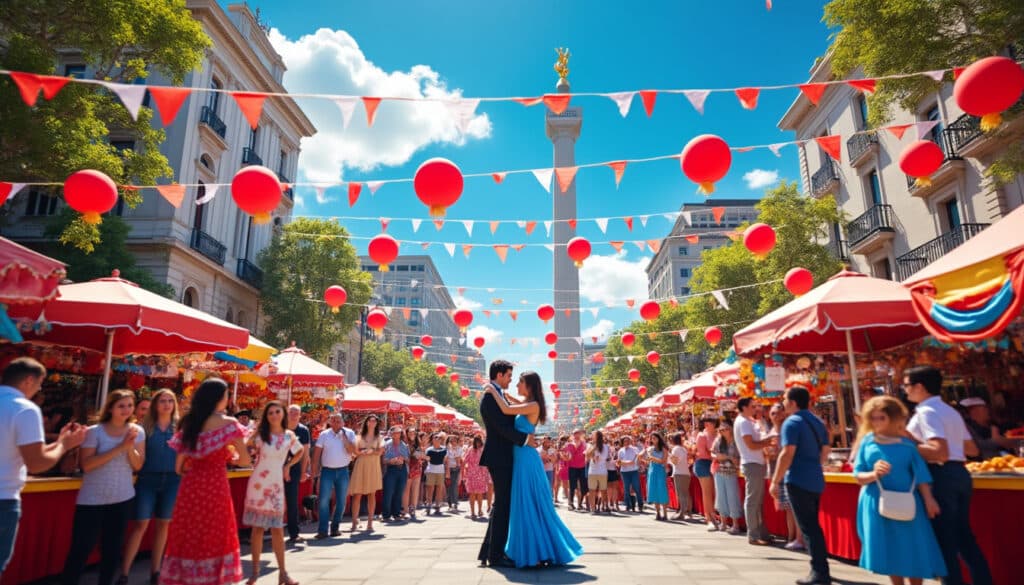
Holidays and celebrations in Buenos Aires
Buenos Aires, the enchanting capital of Argentina, is a city that thrives on celebrations, cultural diversity, and vibrant festivals. Its festive calendar is brimming with events that capture the essence of its rich history and multifaceted identity. From the iconic…

Language and spelling of Buenos Aires
Buenos Aires, often celebrated as the “Paris of South America,” stands as the vibrant capital of Argentina, rich in cultural diversity and linguistic variety. Known for its dynamic blend of European elegance and Latin American flair, Buenos Aires captivates millions…
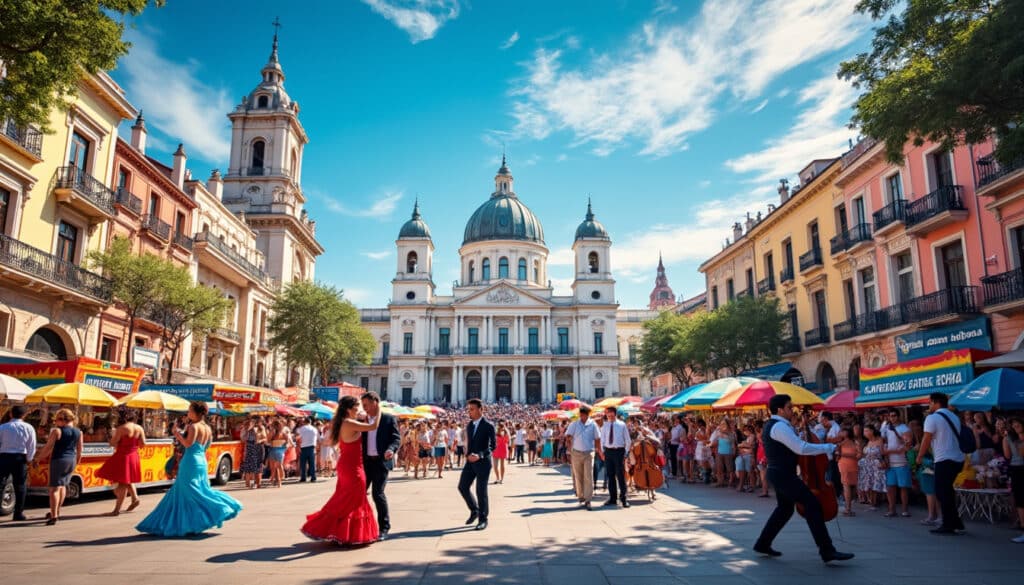
Local tips for tourists in Buenos Aires
Embark on an unforgettable journey through the vibrant streets of Buenos Aires, a city that seamlessly blends rich history with modern charm. For tourists visiting Buenos Aires, these insider tips will help you navigate the city’s hidden gems, culinary adventures,…
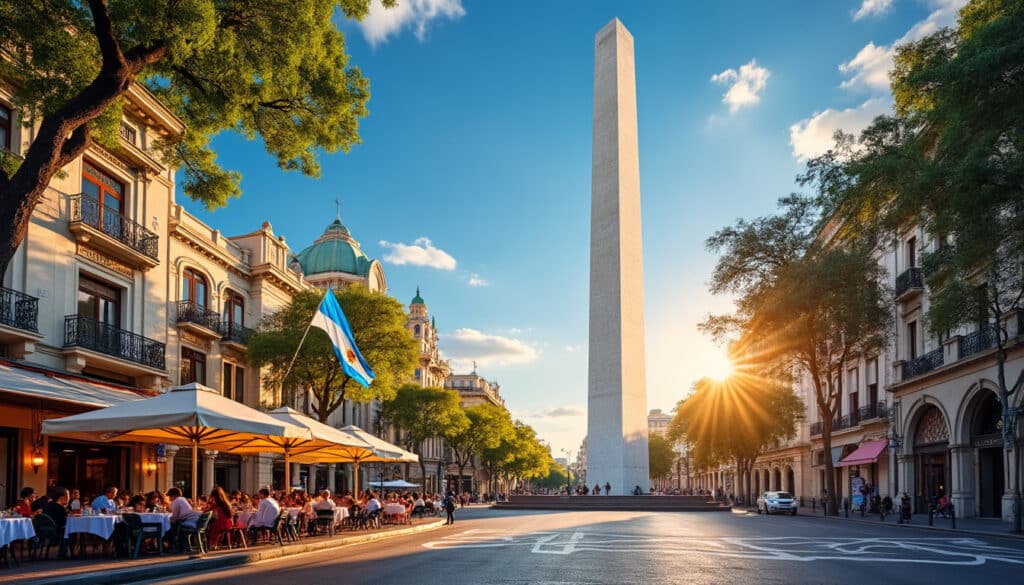
Names, flags, and identity of Buenos Aires
Buenos Aires, often dubbed the “Paris of the South,” is a city where history, culture, and identity intertwine in a dynamic tapestry. Beyond its vibrant streets, alive with the rhythm of tango and the aroma of mate, the identity of…
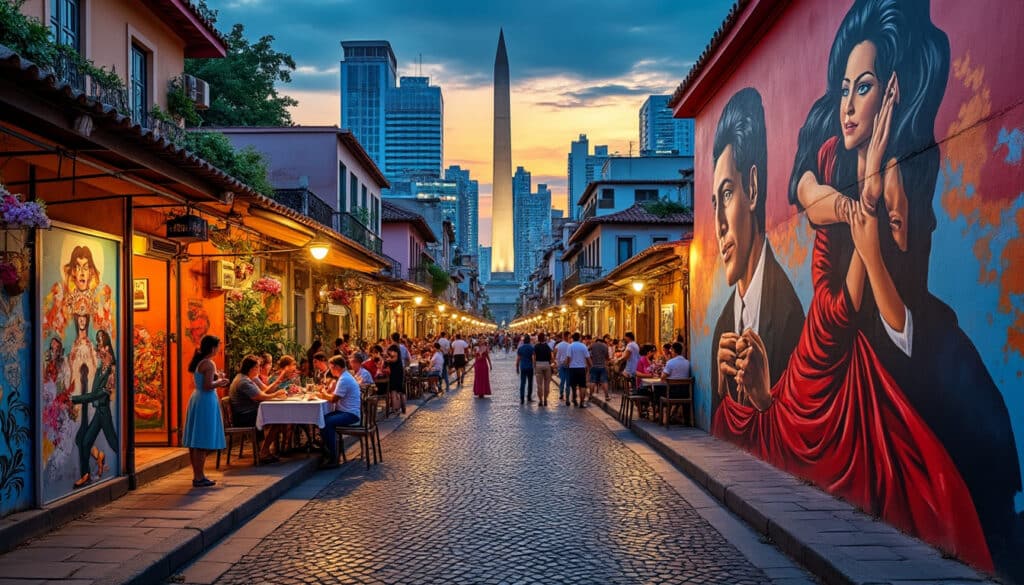
Reputation and identity of Buenos Aires
Buenos Aires, the capital of Argentina, stands as a testament to the rich history and cultural diversity that flow through its vibrant streets. Recognized for its European charm coupled with Latin American flair, the city offers a unique blend of…
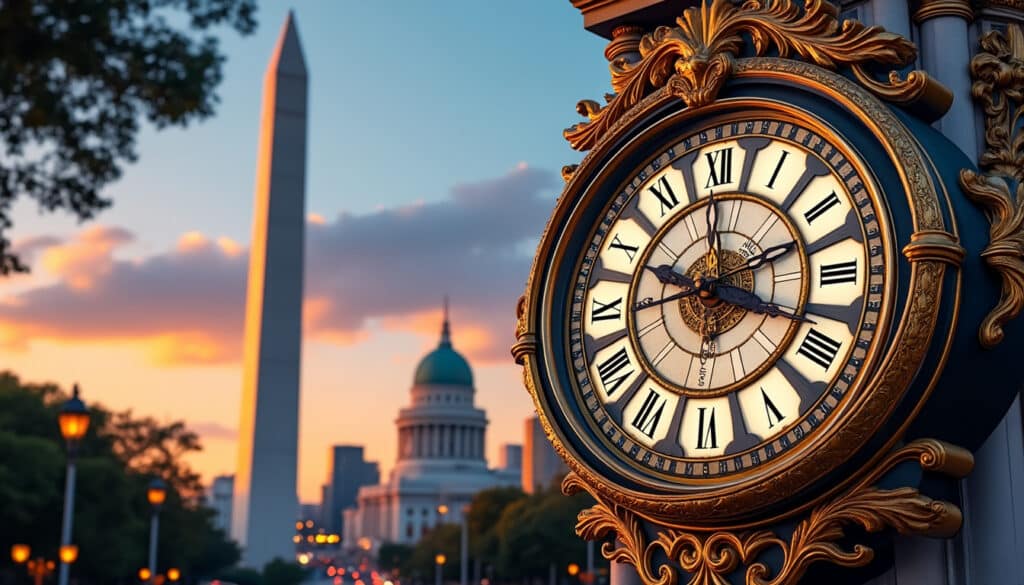
Time and time zone in Buenos Aires
Experience the vibrant ebb and flow of Buenos Aires, where time seems to waltz to the city’s unique rhythm. Understanding Buenos Aires Time is more than just setting your watch; it’s about immersing oneself into the heart of Argentina Time,…
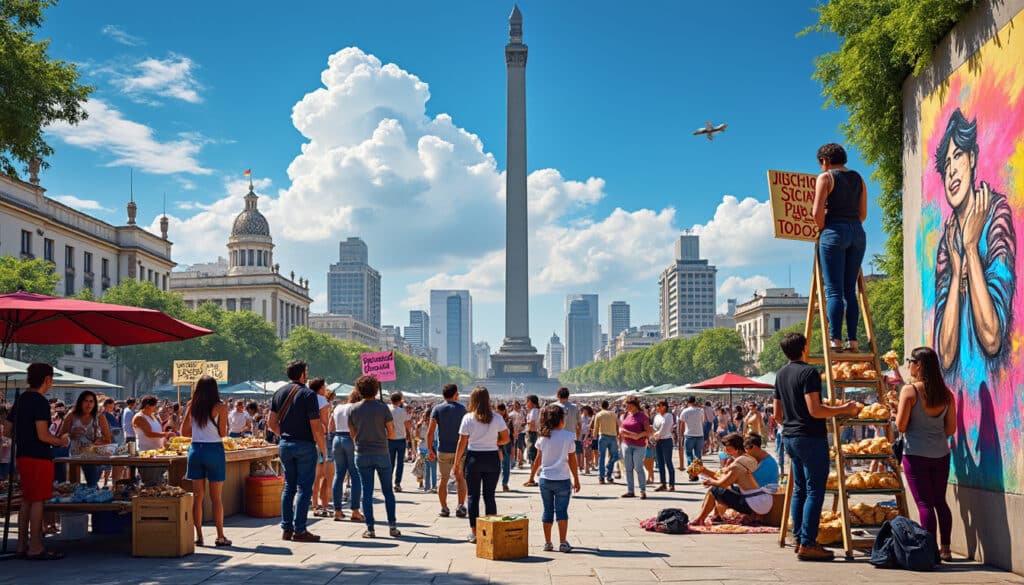
Unusual facts and social issues in Buenos Aires
Buenos Aires, with its captivating blend of old-world charm and dynamic modernity, captivates visitors and residents alike with many intriguing facets and pressing social issues. Behind the tango rhythms and lively street art lies a tapestry of unique cultural characteristics…
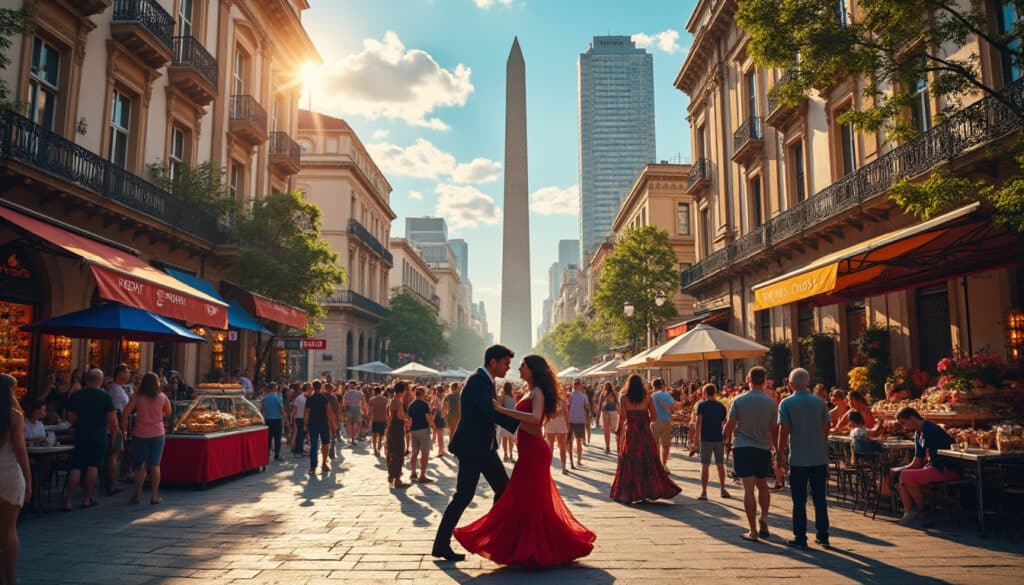
What does Buenos Aires look, smell, feel like?
Welcome to a city that dances even when you walk, a place where the rhythm never stops, and the sensation never fades. Buenos Aires, aptly known as the “Paris of South America,” invites you to explore its streets filled with…

